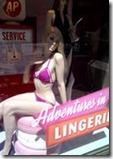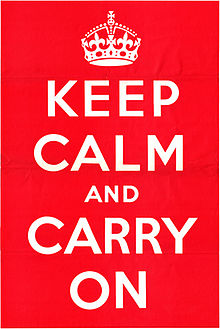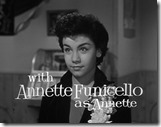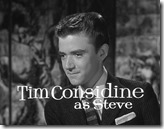At this point it really does seem like heaping on, but The New York Times last week had a good long piece on Curt Schilling’s stumble on the mound of life.
The article basically recounts how Rhode Island got duped into investing big bucks in Schilling’s misadventure: 38 Studios (named after the number that Schilling wore for the Red Sox), a video game company building a game called “Amalur.”
From the start, his [Schilling’s] goal was to build what gamers call an MMORPG — for a massively multiplayer online role-playing game — along the lines of the crazily popular “World of Warcraft,” and to get what he called “Bill Gates-rich” in the process. (Source, here and throughout: NY Times.)
Can’t blame a guy for wanting to get “Bill Gates-rich”, I suppose.
I spent 10 years of my life working for a company that was going to “the next billion dollar software company” – when the only billion dollar software company was MSFT, and a billion dollar software company was a pretty big deal. We were not all going to get “Bill Gates-rich”, but we were going to personally profit big time. Which made me think it wasn’t a bad idea to take a pretty substantial pay cut to go there.
In the process of not becoming “the next billion dollar software company”, we managed to suck about $40 million out of the wallets of our investors. And just like being a billion dollar software company was once a big thing, so was $40 million in walking around money.
And, even though we’ve all become jaded about what exactly constitutes big bucks, it still is.
Thus, the $75 million that Rhode Island invested in Schilling’s company is significant.
The RI investment resulted from a somewhat chance meeting that David Carcieri, then the state’s governor, had with Schilling.
I said, ‘Well, what are you doing?’ ” Mr. Carcieri recalled .... “And he said, ‘I’ve got this business, this company, creating video games.’ Which I knew nothing about — my grandkids know more about it than I do. But he was describing it. He said: ‘It’s a great little company, it’s growing,’ et cetera. And he was looking to grow it further.”
More to the point, Mr. Schilling let drop that he wasn’t getting much help in Massachusetts when it came to the financing he needed to expand, and he was frustrated. You can imagine the heralding trumpets that must have been blasting in Mr. Carcieri’s ears as he listened to Mr. Schilling dangle hundreds of jobs in front of him.
Within a few weeks, Mr. Schilling, a novice in the gaming field, was wowing other local politicians with his outsize presence and his grand ambitions to build a Microsoft-like behemoth. And soon Rhode Island’s lawmakers were rushing to approve a deal to make the state Mr. Schilling’s angel investor. The tiny, struggling state issued $75 million in bonds so that Mr. Schilling’s company, called 38 Studios, could relocate to Providence and unleash the world’s next killer fantasy game.
It seemed like such a good idea at the time: woo a techie company to the state, with bonus points for it being run by Curt Schilling, he of the iconic bloody sock, he who had broken the curse and brought a World Series championship to sports-besotted New England for the first time in 86 years. It all played into Rhode Island’s desperation to do something about its high unemployment rate, its desire to do something high tech before it was too late, its desire to one-up Massachusetts.
So Rhode Island fell right in, despite the fact that every venture capitalists that had taken a look-see had taken also taken a pass on investing in the company.
“It just felt really good, when this all started, to have the sexy sports celebrity from Boston who seemed to like Rhode Island and showed up in Rhode Island, and who built this exotic new business, even though no one knew what it was,” says the historian Ted Widmer, who grew up in Providence and works at Brown. “It seemed like the digital economy, or biotech, or whatever. But then it turned out that it wasn’t the new digital economy. It was some 13-year-old’s medieval fantasy.”
That’s not really an accurate assessment of Mr. Schilling’s start-up, but neither is it entirely off base.
As it not surprisingly turns out, Schilling – for all his confidence and charisma - didn’t turn out to be much of a businessman. (Perhaps the “ama” in “Amalur” comes from amateur.)
Among the other kinda-sorta-crazy things Schilling did, he brought on a fantasy author, R.A. Salvatore, to “create a fantasy world with 10,000 years of back story, racking up a bill (still unpaid) of almost $2 million.” (This has to be one of the biggest pay-off/non-pay-offs any writer ever received.)
While Salvatore was probably the highest paid/non-paid employee, the average salary for the company was a whopping – and near mystically numbered, given Red Sox lore – $86K. He also picked up responsibility for the old mortgages the employees he was recruiting were leaving behind when he wooed them to Rhode Island, which is not the norm for start-ups.
He also made wild, hockey still sales projections. (Where have I seen those before????)
Internal folks had encouraged bringing “Amalur” to market in small-bite releases. But Schilling wanted to go for the brass, massive, multi-player, online whatever ring.
He seemed to think that he could will Amalur into being, in the same way he had always been able to pitch his way out of a bases-loaded jam, even with a throbbing arm. His certainty reassured employees on Empire Street [the company location], who had no idea that he was running out of money.
I will say that I’ve logged plenty of years working in companies run by super-educated, super-experienced, super- cough, cough – savvy businessmen who had no problems running those companies into the ground, or near ground, saved only by some fire-sale purchase by someone looking to pick a few pieces up on the cheap.
So it’s not as if Schilling’s not being the world’s most astute businessman on the face of the earth is the entire problem here.
I will say, however, that what he does seem to have in common with the failed business boyos of my past is massive ego, massive confidence, massive hubris – and all the other massive attributes that tend to suck people in. Not to mention a massive inability to listen to voices of caution, which are inevitably viewed as too doomsday, too negative – just way too corrosive and anti-success.
Here are the dimensions of the 38 Studios disaster:
By the time 38 Studios closed its doors for good in June, dismissing hundreds of employees in an e-mail, the company listed $150 million in debt, $22 million in assets and $320 in petty cash.
In the wake of 38 Studios’ demise, Rhode Island is grappling with the decision of whether to default on the bonds, thus screwing with the state’s credit rating, or repaying the bondholders, to whom it has a moral but not technical obligation.
All this has prompted the current governor, Lincoln Chafee – who had gone hands-off on 38 Studios during his early tenure - to sue Schilling et al, claiming they had hoodwinked poor little Rhode Island.
In his defense, Schilling claims that Chafee deliberately let 38 Studios go bust by not kicking in the survival bit that would have mattered at the company’s hour of need.
This is a circumstance I have lived through several times, and, in my experience, that survival bit in the hour of need tends to matter not, and only prolongs the inevitable.
I suspect that Rhode Island won’t get much financial satisfaction from their suit against Schilling. He may have been a blustering braggart, a piss-poor businessman, but the state of Rhode Island was oh-so-willingly able to buy right in to the vision that 38 Studios was going to save their economy.
Even if they “win” against Schilling, doesn’t sound like there’s much there to be gotten:
Mr. Schilling said he had basically lost his entire baseball fortune in 38 Studios. Months later, he would auction off his bloody sock.
The bloody sock!
Sockless Curt, say it ain’t so!


 ar cry from the pricey – and diverse – mannequins from Almax. Sure, they make blondes. But they also make dark-haired beauties, which, while you can’t exactly say look real, look more real than mannequins did when they were known as dummies. One thing that’s stayed constant: they all look bored. Maybe the ones that see and hear will perk up a tad now that there’s something going on in their heads.
ar cry from the pricey – and diverse – mannequins from Almax. Sure, they make blondes. But they also make dark-haired beauties, which, while you can’t exactly say look real, look more real than mannequins did when they were known as dummies. One thing that’s stayed constant: they all look bored. Maybe the ones that see and hear will perk up a tad now that there’s something going on in their heads. 




 get one or two of them – it’s back,
get one or two of them – it’s back, 



 f pace, there’s the Spy Ship Pueblo, which those of you who were around in the late 1960’s may remember. Let’s hope that nowadays we have more sophisticated means of keeping tabs on just what North Korea is up to.
f pace, there’s the Spy Ship Pueblo, which those of you who were around in the late 1960’s may remember. Let’s hope that nowadays we have more sophisticated means of keeping tabs on just what North Korea is up to. 



